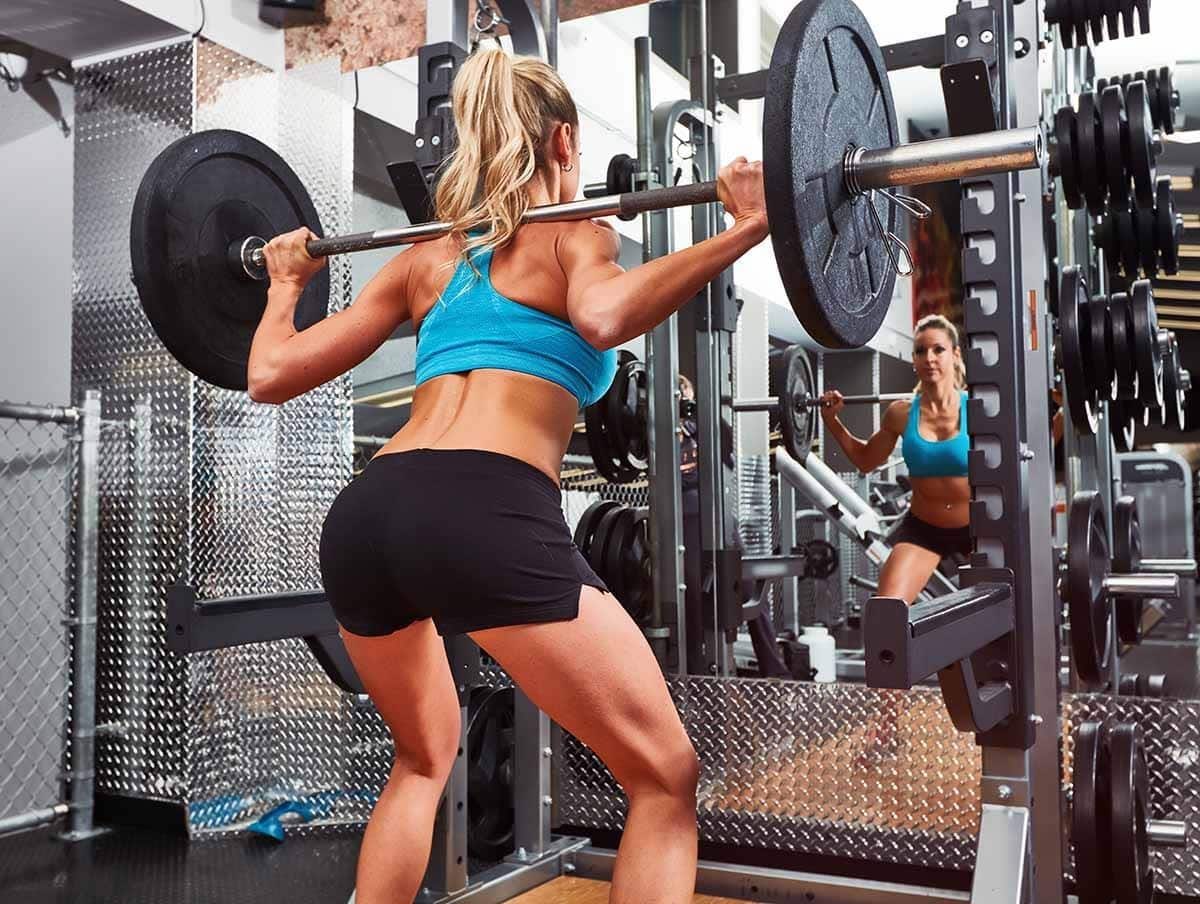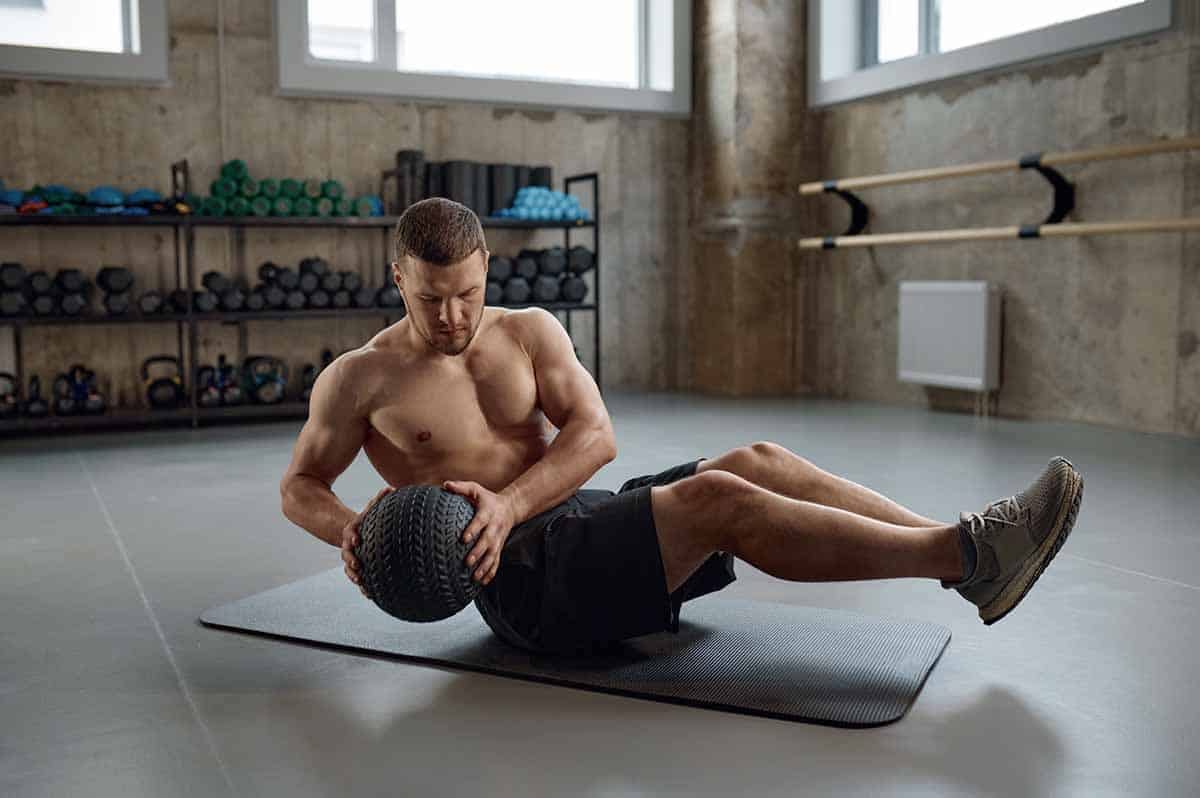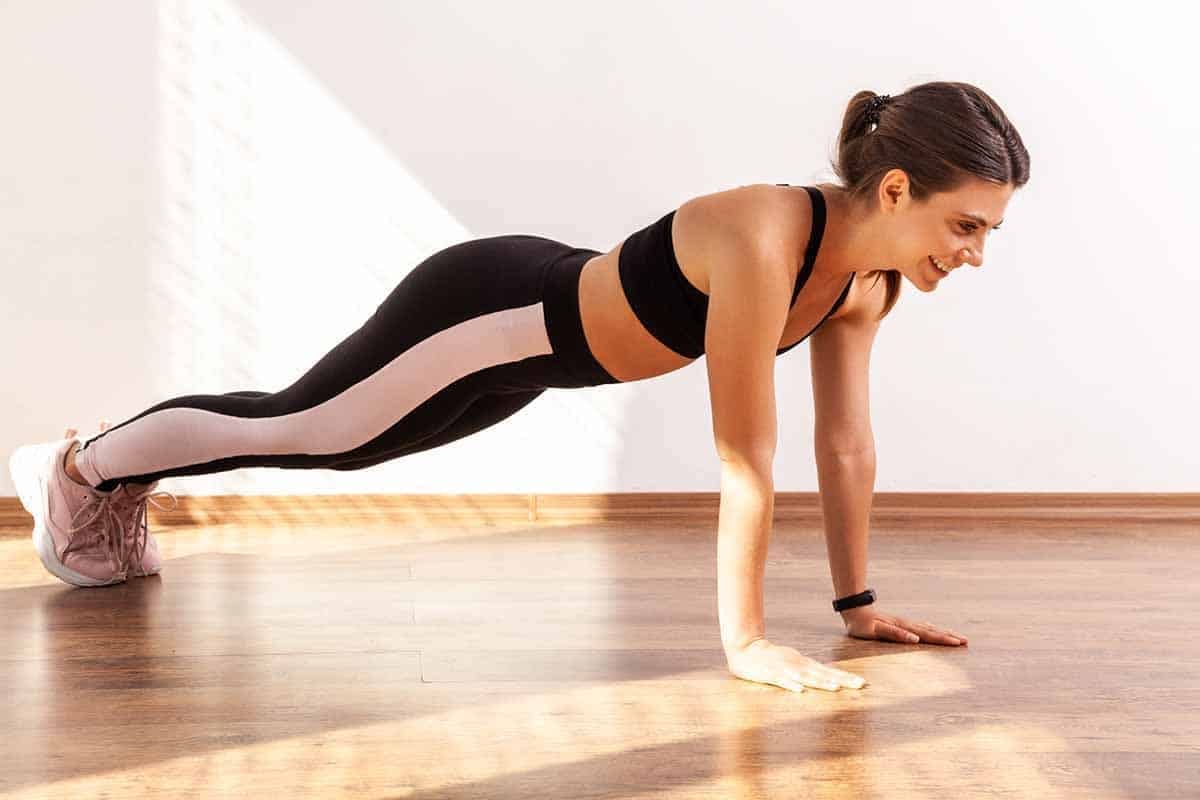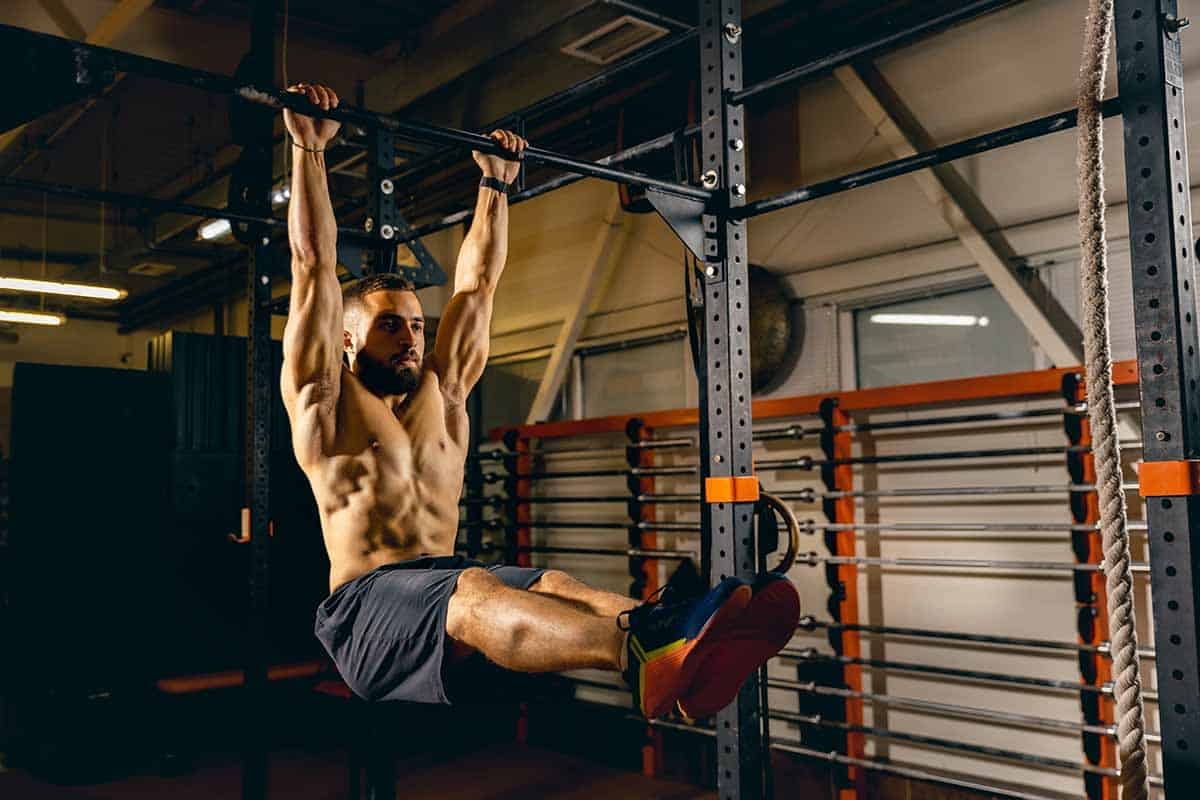7 Compound Core Exercises: Maximize Strength and Stability
What are the best compound core exercises? Try pull up, push-up, deadlift and many other exercises that work your core body...
Looking to finally get your 6-pack on point or working toward a coveted V-line? Compound core exercises have got your back (or, in this case, your front!).
Read on to familiarize yourself with the 7 best compound exercises to build a strong core. We’ll give you detailed how-to guides for each exercise.
Plus, learn about the benefits of compound core exercises on your health and how to implement these exercises into your workout routine.
What Are Compound Core Exercises?
Unlike isolation exercises, which target one muscle group at once, compound exercises involve larger, more functional movements that mimic everyday activities and athletic movements. We can contrast these two exercise types as single vs. multi-joint resistance exercises.
Accordingly, compound core exercises are movements that engage multiple muscle groups and joints simultaneously. These moves significantly emphasize the core muscles, which include the abdominals, obliques, lower back, and sometimes your hips and pelvis.
When you’re working your core, sometimes more is more. Working across multiple joints and muscles can help you build up your abs more holistically so that they’re functional and work synergistically with the rest of your muscles.
7 Top Compound Core Exercises
First things first. Let’s start with the good stuff.
Here is an overview of seven compound moves you can do to develop the muscles of your core.
1. Deadlift
First off, the almighty deadlift. We think about the deadlift as being a leg move. But deadlifting puts major muscular strain on your core muscles when it comes to keeping you stable while you lift. The lower back also works during your deadlift.
To deadlift:
- Set-Up: Stand with your feet hip-width apart, keeping a loaded barbell over your mid-foot area. Bend at your hips and knees to grip the bar with your hands slightly outside of your knees.
- Body Position: Keep your back straight, chest proud, and shoulders back. Make sure you’re hinging at the hips and keeping a bend in your knees.
- Action: Lift the bar by straightening your hips and knees at the same time until you're standing upright.
- Reverse: Lower your bar back to the ground with control by bending back through your hips and knees.
- Reps: 3-6 sets of 8-12 reps if you use light weight. If you’re experienced with heavy weights, you may want to try for a one-rep max or 5-rep max to tap into your full strength potential.
Pro-Tip: Don’t be shy to use dumbbells, an EZ bar or a preloaded barbell if you’d like to start with a lighter weight. Although deadlifts are considered fundamental lifts, they can be tough to master technique-wise if you’re a beginner.
There are so many small variations in stance and muscular activation that can switch your movement from a deadlift to a Romanian deadlift (RDL) or even a stiff-leg deadlift.
If you want to know the differences between these exercises, check out the comparison between RDL vs. Deadlift.
In fact, many beginners don’t even know they’re working on a deadlift variation rather than a traditional deadlift when they’re first starting. It can feel tricky to get all the moving pieces in order to perfect your form at first.
Relax, drop some weight and avoid ego-lifting if you’re new. Starting with dumbbells should help you focus on form when you’re beginning.
If you’re curious about whether you’re actually doing a “deadlift” (i.e., traditional) or a variation, learning the differences between stiff leg deadlift vs. RDL can be also helpful.
You may also know about squats vs. deadlifts, right? But can you do squats and deadlifts the same day? These guides will help you find out!
2. Barbell Squat
Onto the next one.
The squat is considered the “king of exercises,” yet, just about everyone considers this a move for building a round butt, not necessarily an ab exercise.
It’s partially true, but the squat is just as much a core exercise. When you squat with a barbell, the small stabilizer muscles of your legs, hips and core are working overtime to keep you upright under a heavy weight.

To do a barbell squat:
- Set-Up: Stand with your feet shoulder-width apart, or slightly wider. Place your barbell on your upper back (across your trapezius muscles), bracing your core. Then, grab the bar with your hands slightly wider than shoulder-width.
- Body Position: Keep your chest up, your back straight, and your knees aligned with your toes. If it feels comfortable, you can point your toes out at a 15-degree angle.
- Action: Lower your body by bending your knees and hips until your thighs are parallel to the ground.
- Reverse: Drive through heels to come back to the standing position.
- Reps: 3-6 sets of 5-8 reps for maximum strength. If you’re a beginner, try 10-15 reps for 3 sets. You’ll want to use lighter weight.
Pro-Tip: If you’re a true newbie to this move, try doing unweighted squats to get comfortable with your foot positioning. If you’re progressing from dumbbells or no-weight squats to a barbell, try to use the barbell only with no additional weight plates attached to get your form.
It would be helpful if you learn more about squats variations. Furthermore, read the risks and benefits of squats and deadlifts in the same day to see if it’s a perfect workout combination for you.
3. Pull-Up
Do pull-ups work the abs?
Well, the pull-up is mostly a compound back exercise but your abdominal muscles do a ton of work to help you stabilize, move straight up and down and keep your body from swinging. In this sense, pull-ups can be considered a compound core workout too!
- Set-Up: Hang from a pull-up bar with your hands slightly wider than shoulder-width apart. Your palms should face away from you (supinated grip).
- Body Position: Keep your body straight, engaging your core. You may want to have your legs or ankles slightly crossed behind you.
- Action: Pull your body up until your chin is above the bar.
- Reverse: Lower your body back to the starting position with control.
- Reps: 6-10 reps per set.
4. Push-Up
- Set-Up: Start in a plank position with your hands slightly wider than shoulder-width apart.
- Body Position: Keep your body straight from head to heels. Make sure to stack your shoulders directly over your wrists. Your elbows should point backwards, away from your body with your upper arms at a 45-degree angle.
- Action: Bend your elbows and lower your body until your chest nearly touches the ground.
- Reverse: Push up through your palms to return to the starting position.
- Reps: 2-4 sets of 10-12 reps.
5. Russian Twist
Do Russian twists make your waist smaller?
Well… that’s a question of whether you want to combine them with a diet designed to get you lean (vs. bulk) and a little bit of cardio.
But what Russian twists can do is build up the strength of your obliques— your side abs or waist muscles.

To do a Russian twist:
- Set-Up: Sit on the floor with your knees bent and your feet flat out in front of you. Lean back slightly, by about 45 degrees. Hold a dumbbell, kettlebell, or medicine ball with both hands.
- Body Position: Keep your back straight and core engaged.
- Action: Rotate your torso to one side, come back through the center, and then move it to the opposite side.
- Reps: Aim for 20 twists (10 on each side) per set.
6. Forearm Plank
It may be boring (to some), but holding a plank is one of the best ways to get a stable core. Unlike the other exercises on this list, the plank is a static exercise, meaning you don’t move through it for reps. Instead, you do this move as an isometric hold.

But it’s harder than it looks, making this move a great one to get your core firing up and uniting your upper and lower halves for a full-body workout.
- Set-Up: Start in a push-up position but with your elbows bent and your weight resting on your forearms.
- Body Position: Keep your body in a straight line from your head to your heels.
- Action: Hold! Engage your core, and don’t let your hips sag down or pike up in the middle.
- Reverse: To finish, drop your knees to the ground and come out of the position slowly.
- Reps: Hold for 30-60 seconds per set.
7. Hanging Leg Raise

- Set-Up: Hang from a pull-up bar with hands shoulder-width apart.
- Body Position: Try to keep your legs straight and your core engaged. If you need to, you can bend the knees.
- Action: Lift your legs up towards your chest, keeping them straight.
- Reverse: Lower your legs back to the starting position with control.
- Reps: 10-15 reps per set.
Pro-Tip: Bend your knees for a slightly easier variation on a hanging leg raise, but make sure this is a conscious choice. For beginners, it’s recommended to start with your knees bent, then slowly bring your legs to a straight position as you continue to progress in this exercise.
Benefits of Compound Core Exercises
Now that we’ve got a sense of how to do the 7 best compound core exercises for strong abdominals, let’s break down why these moves are so efficient at building up your core muscles and what their benefits are.
1. Improved Functional Strength
They enhance overall body strength and coordination, making daily tasks easier. Many sports and physical activities need heavy coordination from your entire body or multiple muscle groups, which compound exercises improve.
When performed at higher reps, these exercises can also be effective for weight management which mayl help your agility in sports.
2. Core Stability
Strengthening the core stabilizes the spine, improving posture and reducing the risk of injury. Core stability is also good for overall balance and can even help pelvic floor health.
As we age, all of these factors are especially important and can be improved with a stronger core!
3. Efficient Workouts
Working multiple muscles rather than just one means you can cut time from your workouts. This makes compound core exercises a great choice if you’re on a time crunch or tight schedule.
Tips and Techniques for Doing Compound Core Exercises
The following tips and techniques can help you do compound core exercises without getting injured. Remember that you can always count on these tips while you’re doing other exercises.
1. Warm-Up
Some kind of dynamic warm-up will make your compound core exercises feel easier. Warming up helps you increase blood flow, loosen up your muscles, and prepare your body for the workout.
Try exercises like leg swings, light cardio, or unweighted warm-up sets to get yourself ready.
2. Breath
Never forget to breathe. Coordinating your breathing with your movements helps you move through each exercise with more ease. As a general rule, if you can breathe comfortably during a workout, it means you’re working at the appropriate volume or load level.
Exhale during the exertion phase (e.g. when you lift or push) and inhale during the return phase (e.g., lowering, resetting or pulling).
3. Progress Gradually
Progressive overload is one of the simplest weight training principles that lets you increase your training volume as you improve to build more muscle and strength.
Start with lighter weights or easier variations of an exercise and gradually bring up the intensity as you get better over time.
4. Record Yourself
Watching yourself in a mirror or recording your exercises can help you identify and correct form issues. You should also be tracking your progress on weights and reps so you can see how you’re doing over time.
A fitness tracking app like Flex Fitness can help you record your PR during your workouts, leaves you with a go-to spot for all your data, plate calculations and more so you can track your progress and see your improvements.
Using these tips and focusing on your technique, will help you reap the benefits of compound core exercises with more opportunities for progress and less injury risk.
Big Picture
You won’t just have shredded and worth bragging about. Compound core exercises come with a lot of benefits that can help enhance your workouts.
When you work across multiple muscle groups and joints at the same time, it lets you build up your functional strength and core stability.
These exercises can help make you more coordinated and will serve you well when it comes to sports or daily activities. They replicate real-life moves that you do and improve balance, so you may see some improvement in your game. By stabilizing your spine, you may also see better posture.
Squats, deadlifts, plank, pull-ups or variations and more are all accessible moves that you can do at any time across your fitness journey. There’s a progression for everyone, so don’t be shy to drop it to light or no weight while you build up your fitness foundation.
References
Gentil, P., Soares, S., & Bottaro, M. (2015). Single vs. Multi-Joint Resistance Exercises: Effects on Muscle Strength and Hypertrophy. Asian journal of sports medicine, 6(2), e24057. https://doi.org/10.5812/asjsm.24057
Rickson, J. J., Maris, S. A., & Headley, S. A. E. (2021). Isometric Exercise Training: A Review of Hypothesized Mechanisms and Protocol Application in Persons with Hypertension. International journal of exercise science, 14(2), 1261–1276.
Plotkin, D., Coleman, M., Van Every, D., Maldonado, J., Oberlin, D., Israetel, M., Feather, J., Alto, A., Vigotsky, A. D., & Schoenfeld, B. J. (2022). Progressive overload without progressing load? The effects of load or repetition progression on muscular adaptations. PeerJ, 10, e14142. https://doi.org/10.7717/peerj.14142
Related articles


Get fit with Flex
Build muscle & lose weight fast for free.
Available on iPhone + Apple Watch





